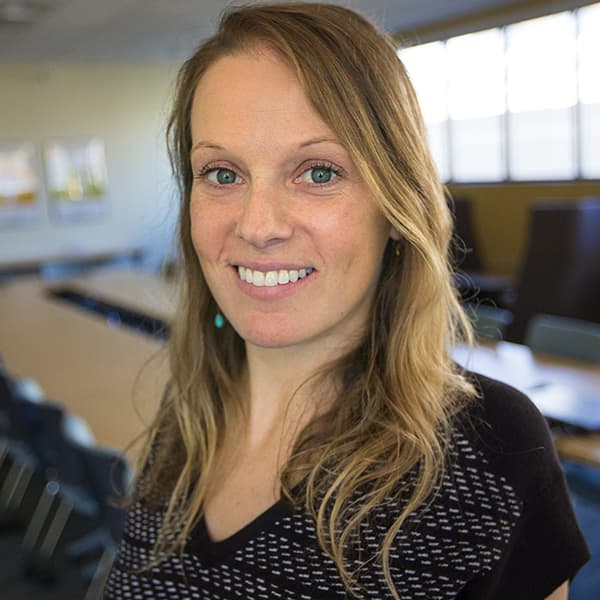Advertisement
Coronavirus Coverage
Why Some Boston Neighborhoods Have Been Hit Harder By The Pandemic Than Others
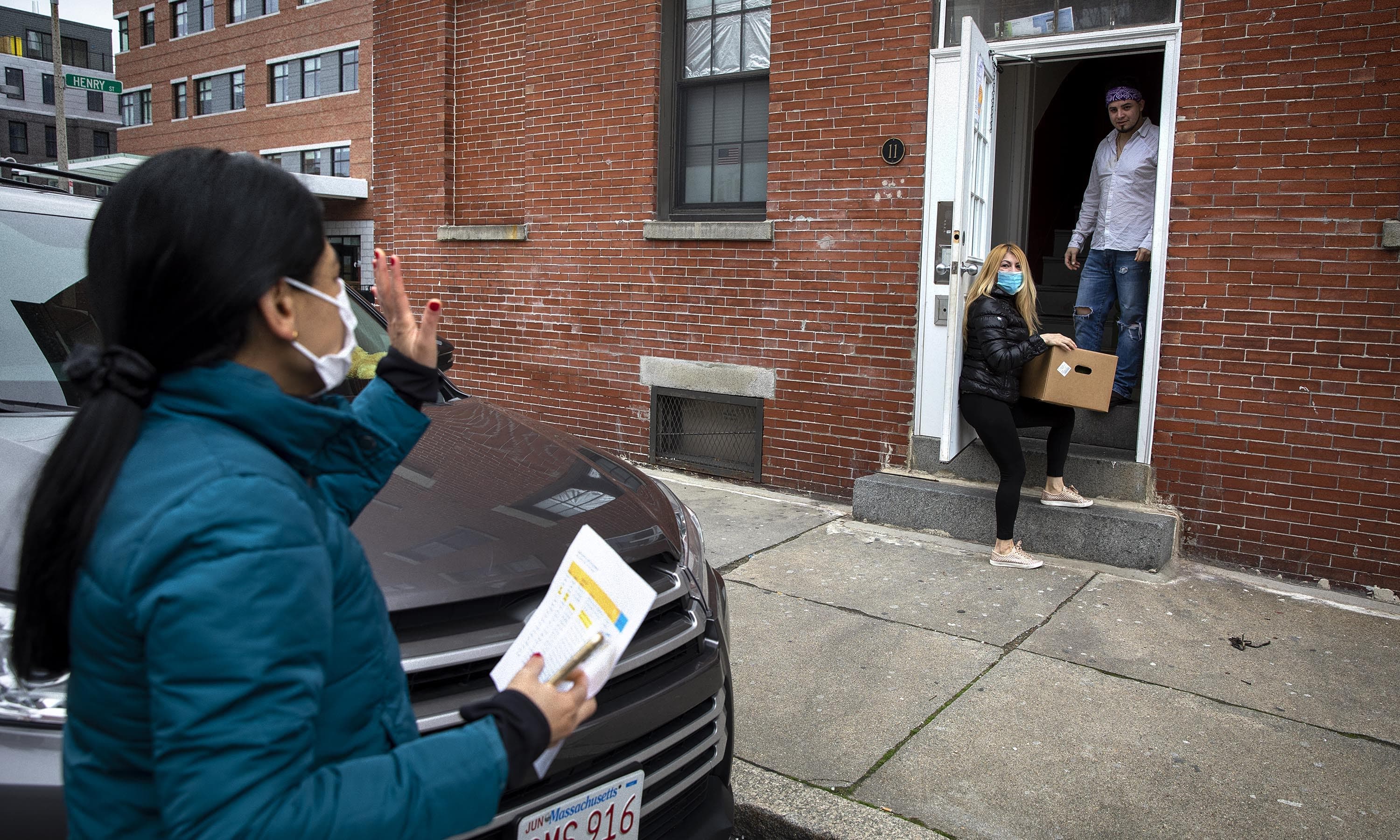
En español, traducido por El Planeta Media.
Boston is a city of neighborhoods. You can easily turn a corner or cross a street and find yourself in a different community with its own character and vibe. Since the onset of the COVID-19 pandemic, the city's neighborhoods — even those that are side-by-side — have experienced the crisis in different ways.
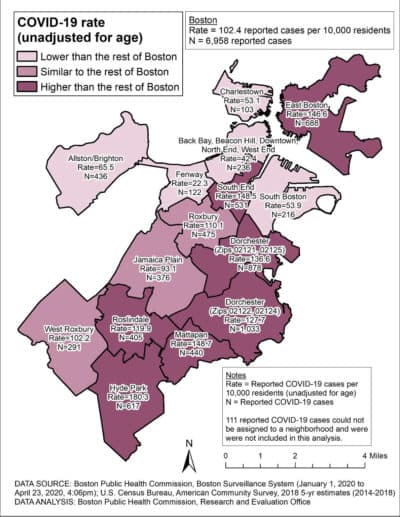
Looking at the Boston Public Health Commission's map, the neighborhoods with the lowest numbers of reported COVID-19 cases are a pale pink color — Fenway, Allston-Brighton, Charlestown, Back Bay and South Boston.
Neighborhoods shaded in dark purple have the most cases and the highest per capita rates of reported infections. Those include Mattapan, Hyde Park, East Boston and Dorchester.
'The Struggle Is Real'
The last few months have been challenging for Rosalind Young. The Dorchester resident said she recently lost her job at a Boston hotel because of the pandemic. She can't afford her $1,100 dollar a month rent, and on top of that, she's taking care of her 80-year-old mother who has several high-risk factors for contracting COVID-19.
Young knows her neighbors are hurting as well. Some have lost loved ones and some are strapped financially.
"The struggle is real," she said. "It's like this regardless but the pandemic has tremendously made it worse, trust me. And so people are still out there having to work because we just don't have no choice."
At Dorchester's Bowdoin Street Health Center, 30% of the community members tested for the coronavirus have had positive results.
Bowdoin Street Medical Director Dr. Kamau Karanja said the poorest and most vulnerable communities are often hit the hardest by public health crises.
Advertisement
"Poorer communities tend to have higher rates of pre-existing conditions," he said. "They're also more likely to have jobs that would increase their exposure, whether it's healthcare jobs or custodial jobs, and they're also less likely to be able to work from home."
That all adds up to some of the neighborhood-by-neighborhood disparities we're seeing in Boston's reported cases, he said.
A Deeper Dive
Census data show black residents make up about a quarter of the city's population but they represent more than 40% of the city's reported COVID-19 cases.
Black residents make up more than 40% of Dorchester. Education levels and median income there are below the city's average. The city's latest data shows a rate of 136.6 cases per 10,000 residents in the neighborhood's northern zip codes, and 127.7 cases per 10,000 in the southern zip codes.
Neighboring South Boston paints a drastically different picture.
Census data show that South Boston is nearly 80% white with education levels and incomes well above the city's average. As of Wednesday, South Boston had 54 reported cases for every 10,000 residents — that's less than half of the infection rate in Dorchester.
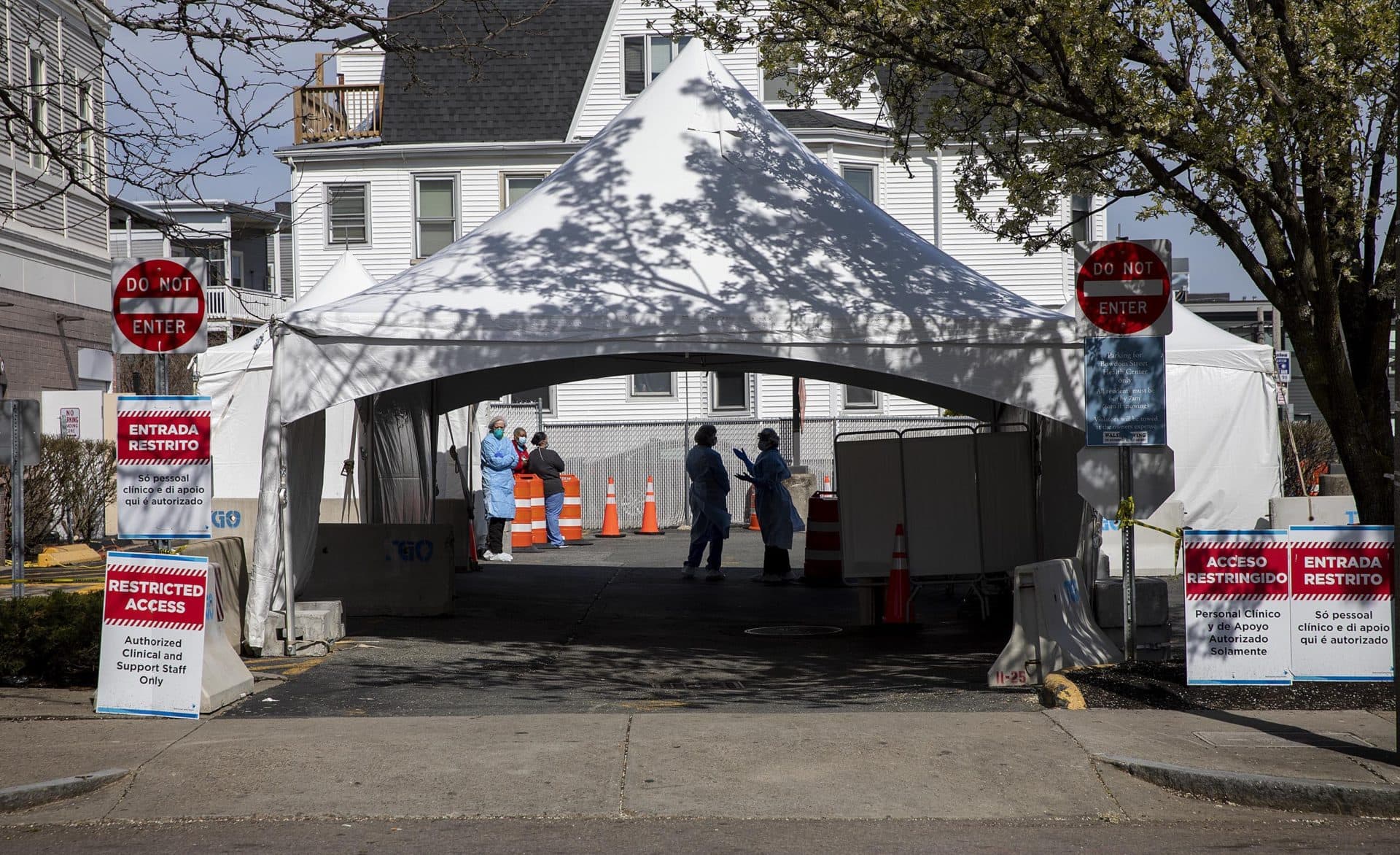
Boston Chief of Health and Human Services Marty Martinez said the city's map of COVID-19 cases illustrates a familiar trend.
"It concerns us that this follows the trajectory of so many public health challenges that we face, of a disproportionate impact in communities of color," he said. "Having said that, there's nowhere in the city where we're testing at the rate that we want to be testing."
According to Martinez, none of the city's neighborhoods have tested more than 5% of its residents — and that needs to ramp up in order to get the full picture of how the virus is spreading. That's especially true in communities with high rates of positive tests, like East Boston, where city data show 47% of those tested had positive results.
Poverty And Language Barriers Combine
East Boston's per capita rate of COVID-19 cases is even higher than Dorchester's.
More than 50% of East Boston's residents are immigrants to the U.S., with many living in predominately Spanish-speaking households.
Patricia Montes heads up Centro Presente, an East Boston nonprofit supporting immigrants. She said the pandemic is raising the stakes even higher for people who have already been living in fear, mostly of immigration enforcement.
"It's not just about being afraid that ICE is going to your house and they are going to deport your family. On top of that now people, they don't have food, they are afraid to go to the hospitals and have access to healthcare," she said.
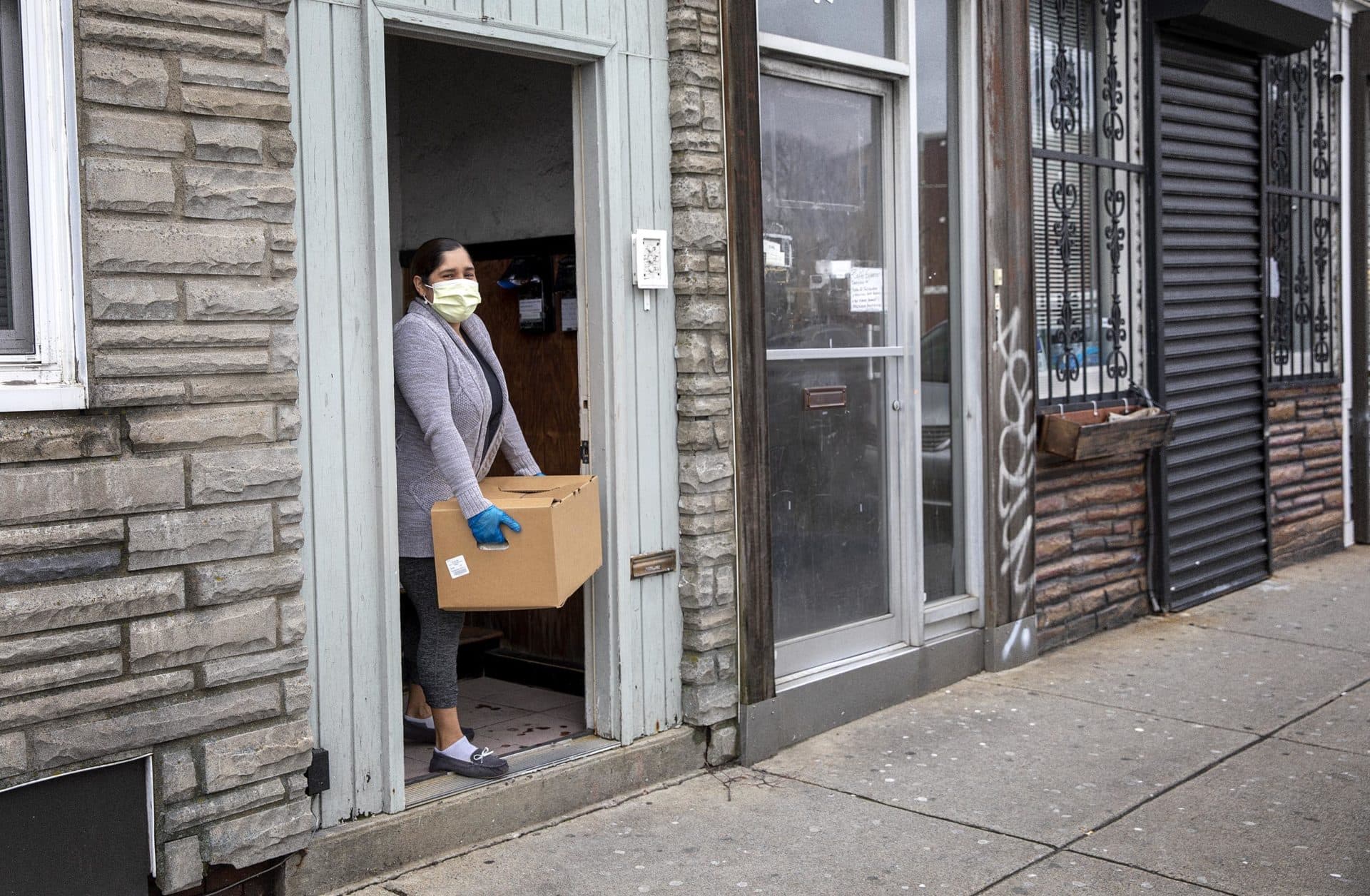
Centro Presente is delivering meals to households in East Boston, where Montes said families often double up in small apartments. Splitting the rent and the bills is a little easier this way, but it also makes physically distancing oneself from others nearly impossible.
A Path Forward, Together
Mayor Marty Walsh recently convened a task force to address some of the inequities laid bare by the pandemic. The committee is working to increase testing across the city, improve data collection and support minority-owned businesses.
It's an effort that City Councilor Andrea Campbell supports. She represents Dorchester and Mattapan, two of the neighborhoods hit hardest.
"I am hoping, and my residents are hoping, that the silver lining to all of this is that the inequities that they have been dealing with and the solutions they have been trying to put forward to eradicate them," she said, "that the entire city now come together to do the same, to do it as a collective."
Karanja hopes the pandemic opens people's eyes to a public health truth he's long known.
"If we have certain parts of our community that are being disproportionately affected, when it comes to contagious illness such as this, it puts everybody at more risk," he said.
Because, Karanja said, the health of the poorest among us has a direct impact on the city's health as a whole.
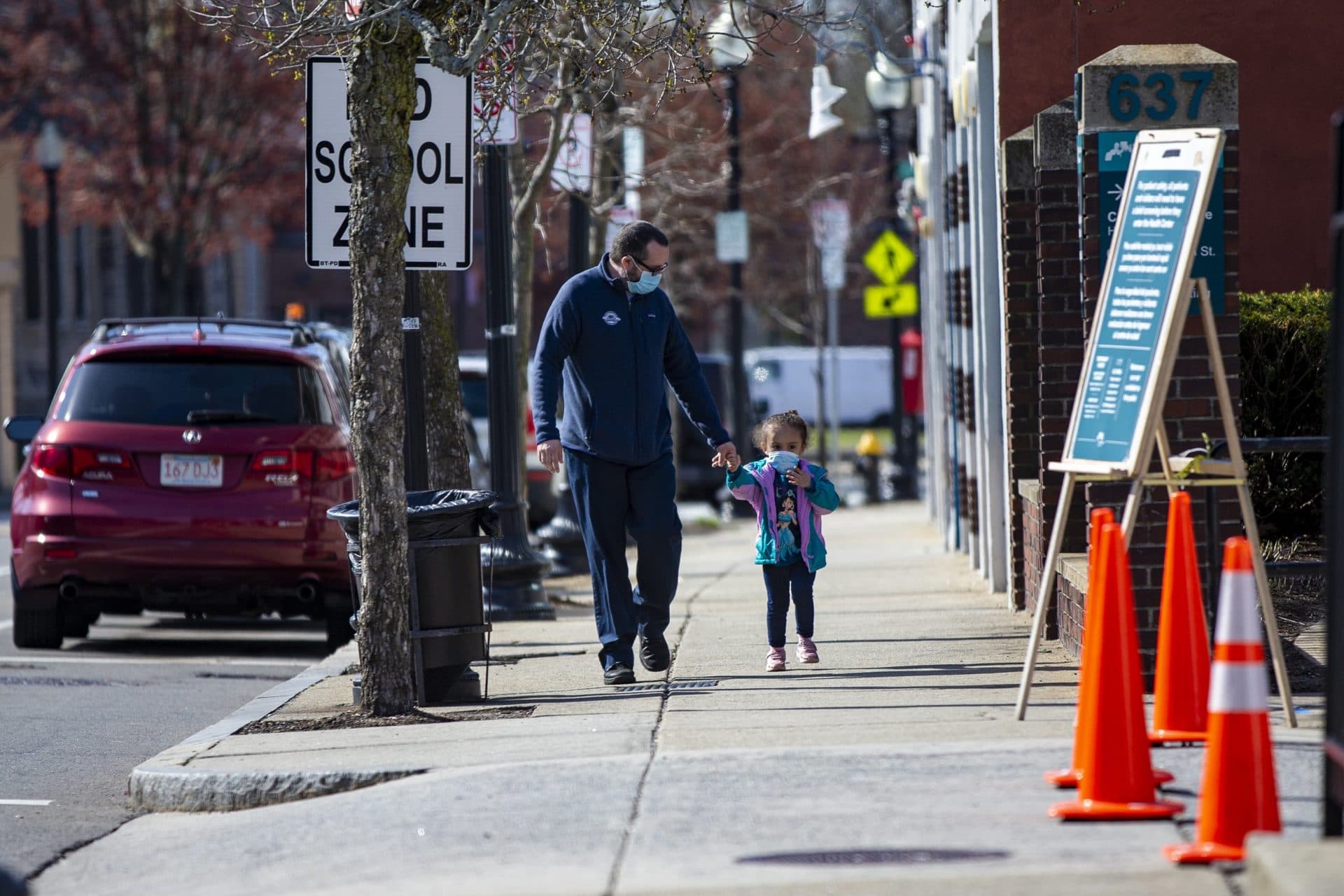
This segment aired on April 29, 2020.
